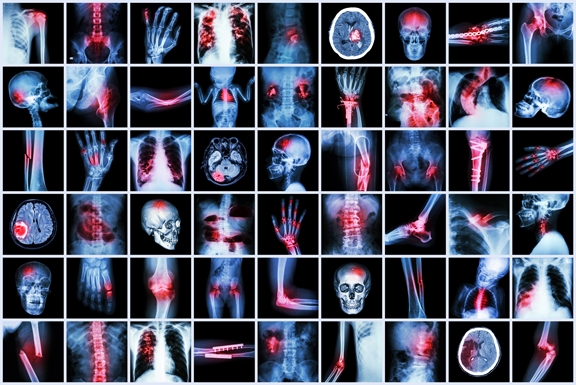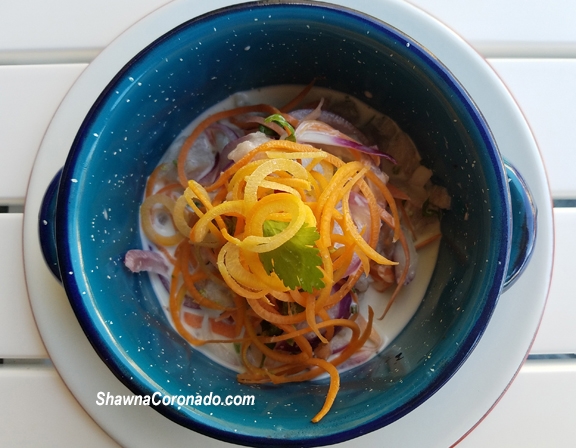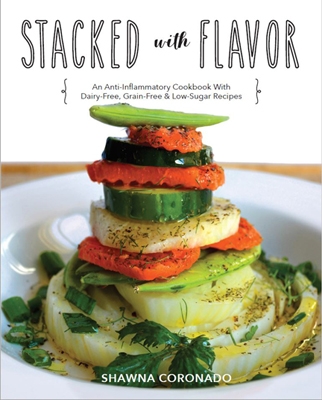Understanding and Controlling Chronic Inflammation

Chronic inflammation. Do you have it? If so, this condition can cause chronic pain and discomfort. It is characterized as a heightened inflammatory response that lasts for long periods of time. Chronic inflammation has been linked to many diseases, including osteoarthritis. As a person who has been diagnosed with a chronic inflammatory disease, I feel I really understand what you might be living and I want to help.
In 2015 I was diagnosed with severe degenerative osteoarthritis of the spine. Chronic inflammation causes pain, seclusion, and sadness and helped to spiral me down emotionally. I felt my life was over. Alone and frustrated, I felt I was unable to heal or recover in a way that would lessen my pain. There is hope, though, because understanding chronic inflammation is the first step towards treating it.
What is Pain Therapy?
When I found out my diagnosis, I was barely able to walk or sleep. Life as I knew it was over because I could no longer function. The diagnosis of severe osteoarthritis, also known as degenerative joint disease, was devastating. X-rays confirmed that the material between most of the vertebrae of my spine has disintegrated. It causes intense pain from permanent malformation. Bone rubs against bone, creating discomfort. There is no cure. As a woman under the age of 50.
My doctor recommended “prescription pain therapy”. Pain therapy can definitely help some people with severe conditions. Other people end up addicted to pain medications and in a worse place than where they began.

Is prescription pain therapy the answer for you?
The treatment involves a daily regimen of opioids and other pain medications which can make your condition more tolerable. Although it can also lead to addiction, depression, clouded thinking, nausea, and a whole host of other side effects. Over and over again I asked myself, “Is pain therapy the right one for me?”
Sadly, the doctor had limited ideas beyond surgery or addictive pain medications as an alternative treatment. Who wants all the expense, drama, and possible addiction concerns of opioid-level pain therapy medications? Pain therapy could be the answer for you, but it definitely is not the answer for me. I wanted to try feeling better without pain medications and focused on daily walking, physical therapy, and eating right.
Chronic inflammation can be controlled with diet and nutrition
Everything improved when I met with a clinical nutritionist specializing in Integrative Functional Nutrition (IFN). At the time, I could barely walk due to my pain levels. On the first day, she put me on an anti-inflammatory diet plan. This food plan eliminated foods that were triggered my immediate reactions.
I began to change my life with the help of my nutritionist. I incorporated daily exercise along with an anti-inflammatory food routine. Exercise truly improved my wellness lifestyle. Within a few days, I felt less depressed and more energetic. More importantly, I reduced my chronic pain by about 80%. I learned that chronic inflammation can be controlled with diet and nutrition. These days I feel wonderful.

What is Chronic Inflammation?
Chronic inflammation is an important part of a human’s immune system. Inflammation is the body’s physiological response to injury. If you are injured or have an infection, sentinel cells alert your immune system to the problem. This signal triggers a defense system against foreign invaders. Heat, pain, redness, swelling, and loss of function are all signs of an acute inflammatory reaction. When the injured wound is healed, the acute inflammation goes away.
Prolonged inflammation is known as chronic inflammation. With persistent chronic inflammation, there may be no specific injury such as a cut or pulled muscle. Yet the inflammatory response continues throughout the body. This repetitive distress reaction can lead to chronic inflammatory disease.
A list of diseases are related to chronic inflammation
- Diabetes
- Osteoarthritis and joint disease
- Rheumatoid arthritis
- Cardiovascular disease
- Allergies
- Asthma
- Tuberculosis
- Fibromyalgia
- COPD
- HIV
- Crohn disease
- Chronic peptic ulcer
- Lupus
- Periodontitis
- Sinusitis
- Active hepatitis
According to the National Cancer Institute, “people with chronic inflammatory bowel diseases, such as ulcerative colitis and Crohn’s disease, have an increased risk of colon cancer.” This means that prolonged chronic inflammation can cause cancer.
Most inflammatory conditions are preventable
Causes of chronic low-grade inflammation are consistent with high stress, sleep deprivation, poor fitness, secondary illness or infection, obesity, aging, poor diet, and addictions such as sugar, drugs, drinking, and smoking. Scientists do not fully understand what all causes chronic inflammation, so research continues.
Most inflammatory conditions are preventable because they are created by lifestyle choices. Scientific research has proven that exercising more, reducing addictive substances, losing weight, and improving diet can significantly reduce a body’s reactivity to a chronically inflamed state.
Keep chronic inflammation and its bi-product, disease, and chronic inflammatory pain, at bay. Repeat after me (over and over): “Exercise more and improve your diet!”

How I Fight Chronic Inflammation without Medications
They say that life begins at the end of your comfort zone. My particular comfort zone involved only occasional – or summer seasonal – exercise. Without a doubt, sugar has been my nemesis in the past and was a challenging daily addiction to break. Changing your food routine might seem uncomfortable, believe me I know. I believe that diet has been the single most important lifestyle change to reduce chronic inflammation.
Walk daily and eat an anti-inflammatory diet to reduce chronic pain
Walking daily and eating an anti-inflammatory food plan was way beyond my comfort zone at first. Eventually, I added in beginners yoga
as well. After my osteoarthritis caused such extreme daily pain, I needed a miracle. What I got was hard work. Walking, yoga, gardening, and diet became my health. In the end, I came out the other side a better, healthier, and happier person.
If you want less chronic inflammation, you will have to move beyond your comfort zone. People have told me, “It’s too hard to give up dairy!” Really? It’s too difficult to give up a few simple foods in order to reduce your non-stop over-the-top inflammatory pain? Losing an arm or a leg is difficult. Climbing a mountain is difficult. Eliminating cheese and dairy from your life and adding fresh delicious food is not hard. It is simply a new habit. A smart food plan eliminates disease and extends your life. It brings you many additional years of joy with your loved ones. Best of all, it reduces chronic inflammatory pain.
Change your food habits for best success in lowering chronic pain
My life has changed for the better. By making changes I have gained less chronic pain and the result has been increased life satisfaction. You can experience this too.

How I Reduce My Chronic Pain
My anti-inflammatory food regimen is simple – no dairy, no grains, and low natural sugars. I track what I eat with an online tracking device. This helps build a better understanding of food habits. Within four days of going on the food plan, my inflammatory pain was reduced by about 40%. It was a miracle; I was sleeping again.
Success: 30 days to chronic pain-free living
Initially, my goal was to stay on the plan for 30 to 60 days. At the end of 30 days, I went off the high blood pressure medication I had been on for 15 years. By day 60 I felt better than I had in years. The chronic pain that had plagued me had receded significantly. I committed to the food plan for the rest of that year. In another six months, my daily inflammatory pain would go down by about 80%. Even more significantly, my severe allergies receded. I went from having year-round bronchitis and 3 or 4 sinus infections annually, down to no sinus infections or bronchitis at all.
Lower inflammation and change your life for the better!
Since then, I have remained on the food plan for more than five years – I feel better than I ever have before. I eat ALL the food now that I know what works – smoothies, soups, eggs, fish, meats, salad, and more. I’ve become a champ at learning food prep tricks and food has become a joy.
My book Stacked With Flavor: An Anti-Inflammatory Cookbook With Dairy-free, Grain-free & Low-Sugar Recipes is testimony to my passion to help chronic inflammation sufferers find their health.
Dedicating myself to a new wellness lifestyle has truly changed my life for the better. If I can do it I know you can do it too. Begin your life again by making healthy choices!
Read the Frequently Asked Questions section below for more answers and tips about chronic inflammation.
Chronic inflammation can be caused by high stress, sleep deprivation, poor fitness, illness or infection, obesity, aging, and poor diet. Additionally, autoimmune disorders and long-term chemical exposure can cause inflammation. Addictions to sugar, drugs, drinking, and smoking also contribute.
1. Control your blood sugar and sugar consumption.
2. Eliminate ultra-processed foods and eat a healthy anti-inflammatory diet.
3. Exercise regularly, for example, walk or do yoga.
4. Catch up on your sleep and reduce stress
Chronic inflammation for a prolonged state creates permanent damage to your joints, heart, brain, and other organs. Accordingly, inflammation also causes pain.





